Alice Scott: NSPA Marketer of the Year Portfolio
Shield co-editor-in-chief Alice Scott presents to Clifford Stanchos’s U.S. History class as part of Student Press Freedom Day.
Coming into the 2023 school year as co-editor-in-chief of the McCallum High School newspaper, no one prepared me for the fact that, by definition of the role, I would be producing less content. As an editor and a leader first, my writing, photography and design would take a backseat.
This was a hard pill to swallow for someone who had built an extensive portfolio of work over the past seven years as a student journalist.
But I quickly learned that there was much to do behind the scenes, and that the value of that work paid off with a different kind of reward. It could be seen in the little conversations with new staffers. The late nights spent fixing folios. The lessons and activities planned to educate and motivate the staff.
In spite of the benefits of this work, it still felt disappointing when I noticed that I had half as many bylines as I did when I was just starting out as a freshman on staff.
I was eager to have an impact on the face of our publication. Our newspaper, The Shield, had a fresh new look thanks to the prior-year’s EIC who updated our style guide for the first time in years. And our website and Instagram account, which had just reached over 5,000 followers, were both posting popular new content daily.
We were not struggling in our image or content production, but rather in our ability to physically meet the demands of the content we needed to produce. The truth was, creating a high quality publication costs a lot of money and MacJournalism found itself having to pick and choose between camera repairs or contest submissions or sending students to conventions, despite the staff earning those opportunities.
It was no secret that our news program did not have a dedicated source of income.
We discontinued subscriptions in March of 2020, giving everyone at McCallum access to The Shield when it came out amidst a global pandemic. We still mail copies of each issue to all students free of charge because it never felt right to switch back, even after returning to campus.
And unfortunately, scholastic journalism seldom finds itself as the No. 1 priority for public high schools in Texas. My district, Austin ISD, went into the 2023 school year with an $87 million deficit. Funding high school newspapers just couldn’t be a primary concern.
I knew where I could make my mark — where I could have the most impact in this new role.
Our program needed funds, yes. But I wanted to build something bigger than that. The mission of MacJournalism is to connect the school. Our publications are some of the only places where you can see sports and student clubs and the arts all in the same place.
We had an audience, what we needed was their awareness.
My main goal with these marketing campaigns was to inform the school community about the work MacJournalism does and the challenges that come with it, in hopes of creating a different kind of appreciation and support for the program.
I wanted to give the community — our audience of MacJ readers — a reason to be proud of the work we do. Scroll through my portfolio to see how I did it.
Campaign 1: The I ❤️ MacJ campaign
Despite, our heavy social media presence, MacJournalism has never held a promotional fundraiser. Most years, parents of staff members would come together to donate money to the program, but MacJ had never formally asked the community for money.
I started out planning our messaging by setting up a fundraising website hosted through LivingTree.org that would allow us to receive contributions online. I wrote original copy to feature alongside images of The Shield staff in action. Though donors could contribute any amount, I also created a tiered donation scale to give them a frame of reference for our needs.
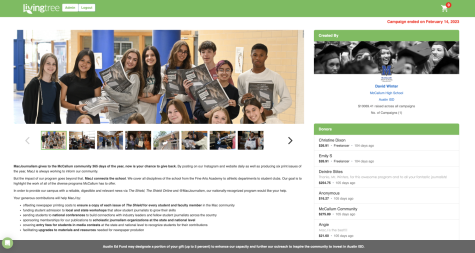
Tiered Donations
Publisher – $1,000
Editor – $500
Journalist – $250
Patron – $100
Contributor – $50
Freelancer – $25
I designed promotional tattoos and flyers which we distributed on campus the day we launched the fundraiser.
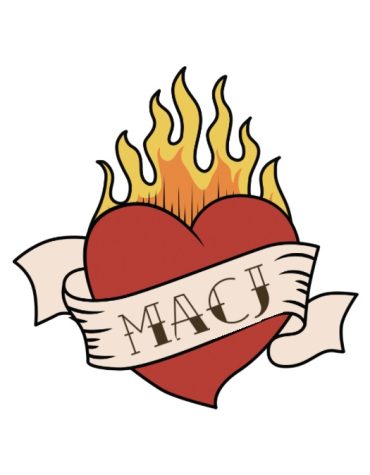

The tattoos put the “fun” in fundraiser by serving the dual function of showcasing support for MacJ as well as serving as a reminder to students about the fundraiser. Within one week we had nearly $2,000 in donations. This wasn’t just due to the outreach done on campus. We promoted the campaign on our Instagram account @macjournalism and encouraged staffers to promote the drive on their personal social media accounts. Earlier in the year, we took note of the way the New York Times promotes articles by posting links on stories and began using that in our promotion of our website. We used a similar strategy when promoting the fundraiser by specifically suggesting staffers share the link through stories.
[Best_Wordpress_Gallery id=”70″ gal_title=”Marketer of the year gallery 1″]
One challenge we experienced as we were getting started was that students on newspaper staff had difficulty finding the words to seek community support. To help, I drafted two letters, one for business contributors and another for families in friends that staffers could use when soliciting donations.
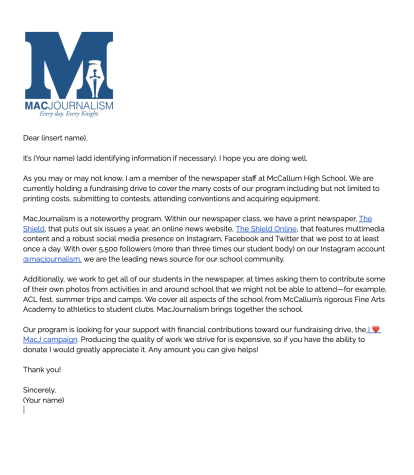
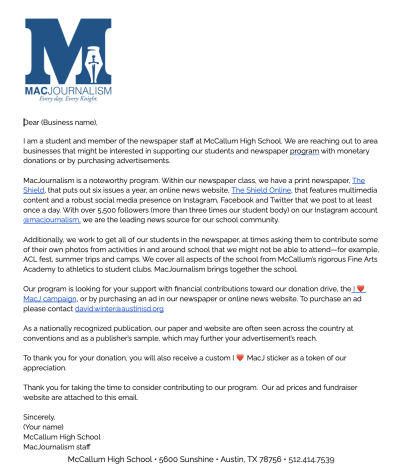
As donations started to come in, I took time to hand-write personal thank you notes to each of the contributors no matter what size the donation and sent them (as promised) an I ❤️ MacJ sticker for their laptop, water bottle or car window.
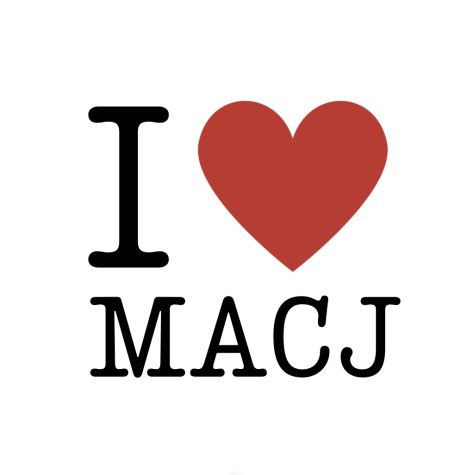
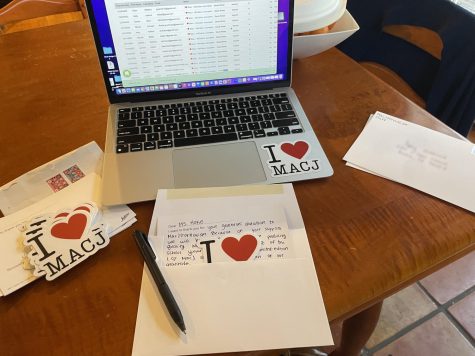
The fundraiser took off with a strong start in December raising, $4,000 of the $10,000 goal. However in January, it seemed to plateau, with contributions just under $650 donations. To promote the campaign ahead of its February 14th deadline, we made a 15-day push on social media, highlighting 15 reasons to love MacJ and encouraging our community to share the love ahead of Valentine’s Day. This gallery features eight of the 15 posts — some of my favorite ways that MacJ provides quality journalism to our community. You can find all 15 on Instagram, @macjournalism.
[Best_Wordpress_Gallery id=”72″ gal_title=”Marketer of the Year Gallery 2″]
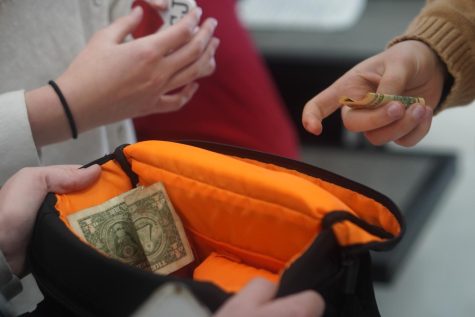
By the morning of Feb. 14, we were roughly $500 short of our goal, so we took to the campus, encouraging students and staff to drop whatever change they had into our camera bags to get their I ❤️ MacJ sticker. The effort earned $275.89, inching us closer to the final tally of $10,069.41, exceeding our $10,000 goal.
The presentation below compiles detailed Instagram insights from our 15-post social campaign as well as analytics from Living Tree that document the funds raised and total number of donors. Note: Individual crowdsourced contributions from the McCallum community on Feb. 14 were entered in as only one of the 104 donors, under “McCallum Community.”
Campaign 2: Student Press Freedom Week
Feeling good about the support we were receiving from the community, I knew it was now our time to give back. I decided to plan and execute a five-day news literacy campaign during the week of the Student Press Law Center’s annual Student Press Freedom Day. The campaign took root in the 1988 Supreme Court case Hazelwood v. Kuhlmeier which ruled that student news organizations could be censored by school administration if the administrator has a “legitimate pedagogical concern” — a phrase that, lacking clarity, has allowed censorship of student media to go unchecked.
In response, the New Voices organization, a student-driven movement works to restore the rights of the student press by going state by state to pass legislation (New Voices laws) that protect student journalist from censorship. There are 17 New Voices states as of March 2023, but Texas is not one of them.
This means that MacJournalism, like other school news programs in Texas, could be subject to administrative censorship — something few members of our news staff, and even fewer members of our school community, were aware of. Fortunately, McCallum has a supportive team of administrators that champion the rights of students to free expression, so I reached out to the McCallum principal, Ms. Nicole Griffith seeking permission to teach my fellow students about press freedom and their rights.
I created the PowerPoint above that detailed the relevant issues surrounding student press freedoms and shared it with Ms. Griffith. We decided social studies was the best class to present this information in, and she connected me to the school’s social studies department chair, Clifford Stanchos. Mr. Stanchos shared my lesson plans with the history department and teachers signed up to have guest speakers from the MacJ team on Feb. 23, Student Press Freedom Day, and on Feb. 24.
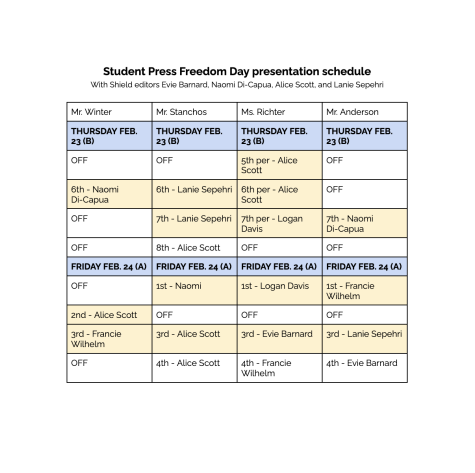
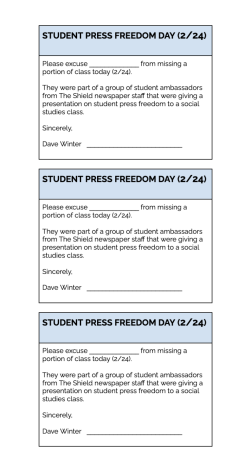
With the on-campus activities planned, I switched gears to focus on the social media aspect of the campaign. Student Press Freedom Week kicked off on Feb. 20, with an Instagram post detailing the precedent-setting Supreme Court case Tinker V. Des Moines that solidified students’ rights to free speech at school. Each day I wrote and shared an Instagram post about different aspect of Student Press Freedom Week. Scroll through the gallery below to read each post.
[Best_Wordpress_Gallery id=”74″ gal_title=”Marketer gallery 3″]
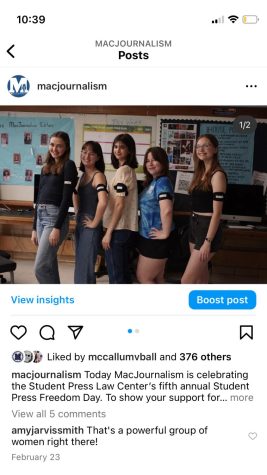
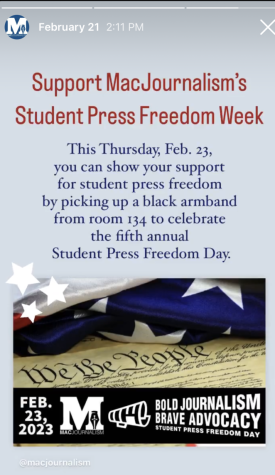
We also used Instagram to promote black armbands, like those used in the Tinker case, that I created for students to wear to show their support for student press freedom on Feb. 23 and Feb. 24.
Each armband was hand created with an iron-on patch, available in the newspaper room and distributed during presentations.
The gallery below includes the adults and students from the McCallum community who showed support for student press freedom by wearing black armbands below.
[Best_Wordpress_Gallery id=”76″ gal_title=”Marketer portfolio 4″]
Since not all social studies teachers were able to work in a guest presentation, I recorded the presentations, then edited and posted them as Reels via Instagram to ensure that everyone who wanted to learn more about this issue had the opportunity to. Utilizing Reels allowed us to implement multimedia content into the campaign to showcase the work we were doing in a different format. And while posts can get lost in our feed, Reels were more likely to show up on our followers For You pages.
[Best_Wordpress_Gallery id=”83″ gal_title=”Marketer gallery 5″]
One of the most valuable aspects of the campaign was that Principal Nicole Griffith signed the New Voices Texas Administrator Pledge, committing to supporting a free student press on the McCallum campus. My co-editor, Evie Barnard and I also signed the NVT pledge, signifying The Shield’s support of the New Voices and their movement. The editor-in-chief of The Knight, Charlie Partheymuller also signed the publication pledge on behalf of the yearbook staff.
[Best_Wordpress_Gallery id=”82″ gal_title=”Marketer Gallery 6″]
As the campaign came to a close, I converted our week-long social media content into a web post to make it easy to find all the information in our online publication. In the weeks that followed, both my adviser, Mr. Dave Winter and I received thanks and compliments for putting on the event. It was clear that students and staff on campus appreciated the work we did. But, one of the best parts about this campaign was that everything we did was accessible online. The results we saw from our social media analytics helped solidify that this campaign was not just influential for those on campus, but the greater McCallum community.
Final thoughts
Looking back on the year, it’s hard to know how much school support or pride for MacJournalism has grown due to the campaigns I organized this year. While likes, shares and comments are quantifiable, the human emotions that were the intended end result are not. However, I do firmly believe that the marketing work I did this year made a difference.
Why?
It was watching the girls basketball team continue their winning streak (that would lead them to become undefeated district champions) in a game against Northeast High School while sporting MacJ tattoos. It was English teacher Amy Smith telling me, during my Writing Center shift, that she couldn’t wait to pick up her arm band on Thursday. It was the $250+ dollars that students gave in spare coins to support our program.
This year, McCallum students and staff wore their support for MacJournalism on their bodies, posted their love for the program online and expressed interest in the work we were doing.
The analytics of money raised and insights on social posts show the success of the content I produced this year. But it was what I saw on campus, across all of McCallum’s different groups, that convinced me my goal had been met.
Your donation will support the student journalists of McCallum High School. Your contribution will allow us to purchase equipment and cover our annual website hosting costs.


